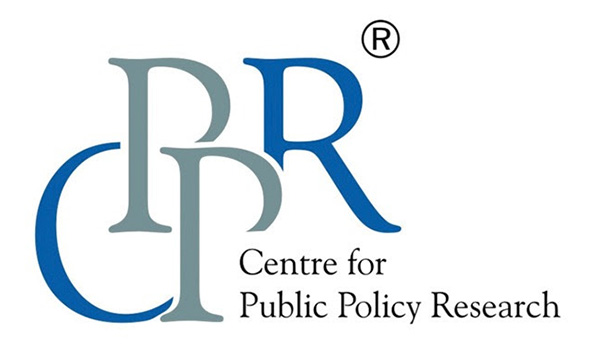Articles

India – U.S. Relations: Change, Continuity and Transformation
November 18, 2021
The Link Between Internet Use and Global Warming
November 19, 2021India and Vietnam should Explore Practical Maritime Cooperation through IPOI

Vietnam’s Prime Minister Pham Minh Chinh is expected to visit India in the coming weeks. This will be his first visit after taking over as the Prime Minister; it will also be an opportunity to discuss with his counterpart Prime Minister Narendra Modi to take the bilateral comprehensive strategic partnership to new levels. Earlier, the two leaders met in Glasgow on the sidelines COP26 and had a “productive exchange”.
In the run up to the visit both sides held the 11th round of Political Consultations and the 8th round of Strategic Dialogue between the Foreign Ministries of Vietnam and India. Deputy Minister of Foreign Affairs Nguyen Quoc Dung and his Indian counterpart Riva Ganguly Das discussed “future cooperation agenda, including high-level exchanges and celebrations to mark the 50th anniversary of India-Vietnam Diplomatic Relations in 2022”.
Besides the bilateral cooperation issues between the two counties such as development and capacity building initiatives such as “Quick Impact Projects, ITEC and e-ITEC initiatives, PhD fellowships, digital connectivity and heritage conservation”, the officials also discussed their “close coordination at multilateral forums, including at the UN Security Council, where both India and Vietnam are concurrently serving as non-permanent members”
Both sides agreed to “enhance their bilateral cooperation in line with India’s Indo-Pacific Oceans Initiative (IPOI) and the ASEAN’s Outlook on Indo-Pacific (AOIP) to achieve shared security, prosperity and growth for all in the region”. IPOI and AIOP has been a recurring theme in many of India’s statements in the last few weeks particularly during the East Asia Summit and the ASEAN-India Joint Statement on Cooperation on the ASEAN Outlook on the Indo-Pacific for Peace, Stability, and Prosperity in the Region.
India acknowledges the ASEAN Outlook on the Indo-Pacific (AOIP) which promotes “peace, security, stability and prosperity for the peoples in the Southeast Asia as well as in the wider Asia-Pacific and Indian Ocean regions or the Indo-Pacific”. New Delhi sees the AOIP as ‘inclusive’ and endorses “ASEAN Centrality” which is the “underlying principle for promoting cooperation in the Indo-Pacific region.”
AOIP builds on the existing platforms such as the EAS, and ASEAN Member States believe that these mechanisms are fully equipped to “better face challenges and seize opportunities arising from the current and future regional and global environments”. The AOIP appears flexible to the extent that in case the ASEAN seeks, where appropriate and while preserving their formats, to develop “cooperation with other regional and sub-regional mechanisms in the Asia-Pacific and Indian Ocean regions on specific areas of common interests to complement the relevant initiatives”.
Although the Vietnamese statement on the discussions between Deputy Minister of Foreign Affairs Nguyen Quoc Dung and his Indian counterpart Riva Ganguly Das does not mention IPOI, it is useful to expand on the Initiative. The IPOI is built on the premise of practical cooperation in seven thematic areas: (a) Maritime Security; (b) Maritime Ecology; (c) Maritime Resources; (d) Capacity Building and Resource Sharing; (e) Disaster Risk Reduction and Management; (f) Science, Technology and Academic Cooperation; and (g) Trade, Connectivity and Maritime Transport.
India seeks to build a community of stakeholders by creating new partnerships with like-minded States across the Indo-Pacific region. It is encouraging other countries to join the IPOI and few countries have agreed to lead some of the thematic areas under the Initiative. For instance, Japan has agreed to lead the IPOI pillar on Trade, Connectivity and Maritime Transport; Australia and Indonesia on Maritime Ecology; and France on Capacity Building and Resource Sharing.
Vietnam has a coastline of more than 3,000 kilometers and claims and EEZ of more than one million square kilometers. During a recent consultation workshop “Moving toward a blue economy in Vietnam”, it was revealed that the “ sea and coastal areas of Vietnam contribute nearly “47-48% of the country’s GDP, while the GDP of the pure marine economy accounts for about 20-22% of its total GDP”. Furthermore, “the marine sector is expected to contribute up to 70% to its gross domestic product (GDP) by 2030. As per the 2018 Resolution No.36 by the Central Party Committee, marine economy is the central point to enable Vietnam to achieve Sustainable Development Goals (SDGs) by 2030 and vision to 2045”. Also, Vietnam seeks a balanced growth of six at least sectors: fisheries and aquaculture; oil and gas; marine renewable energy; coastal and marine tourism; the maritime sector; and environment and ecosystems.
It is worth mentioning that these six Vietnamese Blue economy sectors are contained in the IPOI pillar on Capacity Building and Resource Sharing. It is argued that there are numerous opportunities for Vietnam and India to explore various pillars of the IPOI and engage in practical cooperation which is the raison d’etre of the Initiative.
Views expressed by the author are personal and need not reflect or represent the views of Centre for Public Policy Research.
Dr Vijay Sakhuja is Honorary Distinguished Fellow with CPPR and associated with our Centre for Strategic Studies. Dr. Sakhuja, a former Indian Navy officer, is also former Director, National Maritime Foundation, New Delhi. He earned his MPhil and PhD from the Jawaharlal Nehru University, New Delhi. He specializes in issues of national security and public policy, particularly in the context of ocean affairs, geopolitics, Climate Change, Arctic, Blue Economy and 4th Industrial Revolution Technologies.

